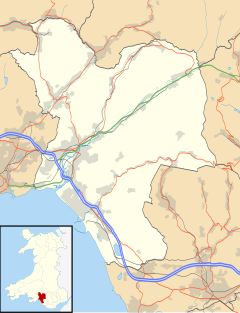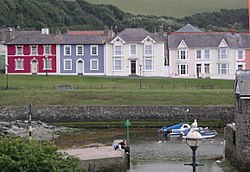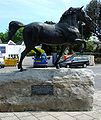
The dome of St. Paul's Cathedral, at rear, watches over Paternoster Square within The City. The square takes its name from Paternoster Row, the center of the London publishing trade. In 1940 the area was devastated by the aerial bombardment of The Blitz during World War II. Paternoster Square is now home to the London Stock Exchange, which relocated here from Threadneedle Street in 2004. The square is a favorite lunchtime venue and a great place for people-watching.

A frilly dress and faraway look herald a fashion shoot in a garden adjacent to St. Paul's Cathedral, the glorious edifice built by Sir Christopher Wren. London is filled with small nooks of green spaces and vest-pocket parks.

An artist takes part in a painting workshop at the Guildhall Art Gallery. The ornate Guildhall, which dates to 1411, is The City's historic administrative center and hosts lavish banquets and corporate events, in addition to boasting a well-respected art gallery.

Four servers pray during Sunday High Mass at London's St. Bartholomew the Great church. Founded in 1123 as an Augustinian priory, the church is intact. Inside, the dark timbered ceiling, massive stone arches, and clustered pillars support one of the two remaining Norman churches in London, redolent of incense and the mysteries of medieval faith. Says author James Conaway, "I'm slightly nervous walking over the stone floor in the presence of the ghost of William Hogarth, the 18th-century artist who was baptized in the pre-Reformation font."

A view taking in the corner of the 1881 Leadenhall Market, at left, and futuristic Lloyds Bank, opened 1986, shows the contrast between old and new. The winged dragon on the corner of Leadenhall Market is symbol of The City. The Leadenhall Market is a labyrinthine open-air emporium designed in 1881 by Sir Horace Jones. It was built on what has been a market site since Roman times. "Today," says Conaway, "occupants of the old shops are mostly restaurants feeding workers spilling out of the looming towers roundabout, or purveyors of clothes, gifts, and spirits that are part of larger retail chains."

A patron at Coq D'Argent, a rooftop restaurant, enjoys a glass of wine and a sterling view of the heart of The City. Author Conaway believes the past and present coexist admirably within The City. "The new architecture may be brilliant and imposing, but we also need those old buildings and open spaces, to ease the mind and make urban intensity tolerable. Without them, we can't begin to understand the present."

A common street scene in The City: Enjoying a pint and a chat after work outside the historic Ye Olde Watling pub, in Bow Lane. Legend says workers who built St. Paul's Cathedral used to come here. "This is where business has always been done," says Londoner Peter Wynne Rees, "in alleyways outside pubs, by people standing around with pots of beer, talking. One reason The City works is that there are so many places like this to go to."

London past and present: 30 St. Mary Axe, the futuristic office building known locally as the "Gherkin," looms behind 13th-century St. Helen's Bishopsgate Church, where people gather for an evening service featuring a rock band. The 40-story 30 St. Mary Axe building was designed by Foster & Partners, one of Britain's star architectural firms. Its double-skinned exterior is designed for maximum insulation, and overall it is London's most environmentally sound skyscraper.

A stylish Londoner window-shops in St. Michael's Alley. The popular Jamaica Wine House, in the distance, is one of many pubs and coffeehouses in the area, a power center in The City, London's bustling financial district. The Celts first came here thousands of years ago. It was later settled by Romans and has for at least four centuries been the beating heart of England's financial empire. Today The City is part of Greater London.

Richard Martin, senior program manager and sword bearer of the Lord Mayor of The City of London, stands amid the Plate Collection in Mansion House, the Lord Mayor's official residence. Built between 1739 and 1752, Mansion House is used for official functions, such as the annual dinner at which the Chancellor of the Exchequer reviews the state of the British economy. Mansion House occupies the site where St. Mary Woolchurch Haw stood before it was destroyed in the Great Fire of London in 1666.


















